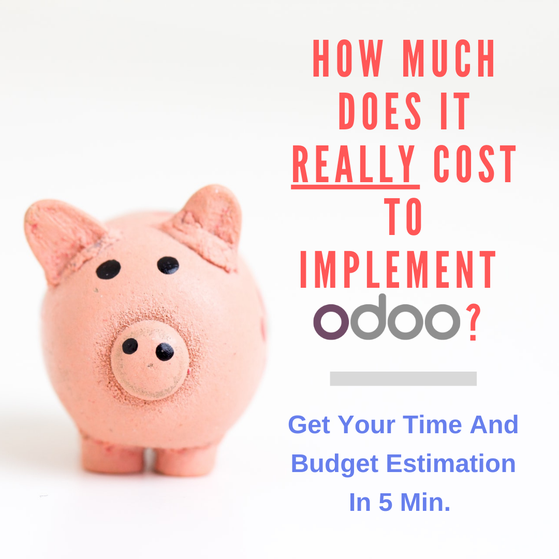Any business that needs to buy products or solutions will use a request for quotation (RFQ) in preparation to purchase or register a new contractor. Request for quote is a standard business process that an organization will use when it wants to purchase a specific product or service. In most cases, the company creates and issues a request for quote, and suppliers offer quotations. The business then selects the lowest rate and signs a contract with the preferred supplier.
RFQ is similar to an invitation for bid (IFB) or an invitation to tender (ITB). Purchasing and procurement managers regularly use the RFQ process as their primary way of inviting suppliers to bid for a product – hardware or service, such as a maintenance contract.
Typically, people use the RFQ process when they are looking for something specific or quantifiable. An RFQ is also useful because it requires suppliers to detail costs for each phase of a product or project.
As a purchasing manager, an RFQ can be your best companion when trying to get the best price for a standardized product. Sellers usually know they are competing to provide a specific product and will offer competitive deals that will save you money.
Managing A Request For Quotation In Odoo

The RFQ process is pretty straightforward. You know what you want to buy, and you need an easy way to tell potential suppliers what you want, what you expect from their proposals, and a timeline for evaluating responses and choosing a supplier.
You can use software to automate some of these processes. Odoo ERP is perfect for these purposes. Whether you want to invest in software or manage the process internally, RFQs follow the same process.
Since a request for quotation is used when you are planning to purchase some products and would like to receive a quote for those products, Odoo uses an RFQ to send your wishlist to your supplier. After your supplier responds to your request, you can proceed with the offer and make a purchase or decline the offer.
Using RFQ With Odoo Purchase Module
Request for Quotation or RFQ is an important document that must be prepared and processed by any commercial organization to participate in any procurement transaction.
Unlike buying for personal use, buying a commercial or industrial product must be done through the proper channel. Here, the right channel means there must be a system to document all purchasing activity.
In addition, unlike in-person buying, where the quantity of the purchased item may be limited, the organization or industry uses large-scale purchases in its activities. Sometimes they will likely have to buy the same item multiple times.
Therefore, to carry out this process systematically, you will need different documents. Another important factor is that you will need to check the price of the product as well as its quality when making large purchases. After all, you can’t just pick a supplier and buy all the products from that supplier. Instead, you’ll want to ask multiple vendors for a quote for a product.
This should include the following data:
- the product’s name
- price information
- delivery period
After completing this step, the buyer will be able to generate a purchase order including a sales contract.
RFQs, as well as POs (Purchase orders), provide transaction transparency and support for the best supplier. The user will be able to take into account the price offered by the seller and the delivery time.
RFQ and purchase order are related, but at the same time, they are two different entities. Odoo guarantees full support for creating, confirming, and submitting RFQs and purchase orders.
Request for Quotation In Detail
Typically, a buyer sends an RFQ to more than one supplier. When you send a Request for Quotation, you will receive a price list for all items specified in the proposal. The price will be for one unit or multiple units.
Next, let’s take a look at how to manage an RFQ using the Odoo 14 Purchase Module.
The purchase module has an “Orders” menu. From this menu, you can create and manage RFQs as well as purchase orders.
Here’s how the process for creating and managing an RFQ looks like:
Purchase> Orders> Request for Quotation
This page displays the status of all RFQs and RFQs created by a specific user. You can find requests to send, pending and late requests here. You will also receive detailed information on all RFQs and MyRFQs.
You will find detailed information on this page regarding such data:
- average order value
- lead time
- purchase in the last 7 days
- RFQs sent in the last 7 days
How To Create A Request For Quotation?
Using the create button, we can access the RFQ form. On this page, you can add detailed information such as vendor names. You can also add vendor links here. You can attach a sales contract to give the seller a clear understanding of the buyer’s terms and conditions.
It also indicates the currency that will be used to purchase the product or service, the date of the order, and the date of receipt. Most importantly, you can add detailed information about the product, including the name and description of the product, the required quantity and the unit of measure.
Once you have added all the required information to the form, you use the Email button to send your RFQ to suppliers. You can add any information if necessary. You will then be able to see the status as Request for Quotation has been sent.
Features Of The Odoo 14 Purchase Module

Whenever a large-scale purchase is made to maintain stocks of raw materials or products, the investor needs the suppliers to submit their quotes for the item. After that, the buyer will be able to study various offers and choose the most suitable one.
As mentioned above, with Odoo 14, a user can generate a request for quotation or RFQ in a few clicks. This will help you to ask different vendors for their quotes for a product or service.
You can create an RFQ using the Create option. Then you will be required to provide various details such as supplier name, purchase agreement, currency, order date, date of receipt, and product details and description.
The user will be able to send a request for proposals by email and make a printout. After submitting the offer, the user will also be able to confirm the order or cancel it using this function.
PO Or Purchase Orders
This is a feature that will help you create and manage purchase orders. This process can be started after the proposal process is completed.
Like any other module, you can also find the Create button here, which can help you create a PO.
It also allows you to provide basic reference data, supplier details, order confirmation date, date of receipt, and other information. Odoo 14 also allows you to add a company name, purchasing representative, and next activity. The billing status of the order can also be viewed in the purchase order dashboard.
Odoo 14 introduced new features like Next Action, which allows the user to plan and schedule the activity.
Product Management
Products and services need to be managed systematically. This will help the organization to effectively manage all tasks to ensure the development of the organization. With Odoo, you can manage products based on their category, price, location, and product availability.
Here you can enter general information about the production, such as storage or consumables, sales price, product category, and so on. Version and tax information, as well as units of measure, can be provided.
It will also support the management of invoices and sales transactions. With Odoo, you can manage products for e-commerce, point of sale, and other types of business.